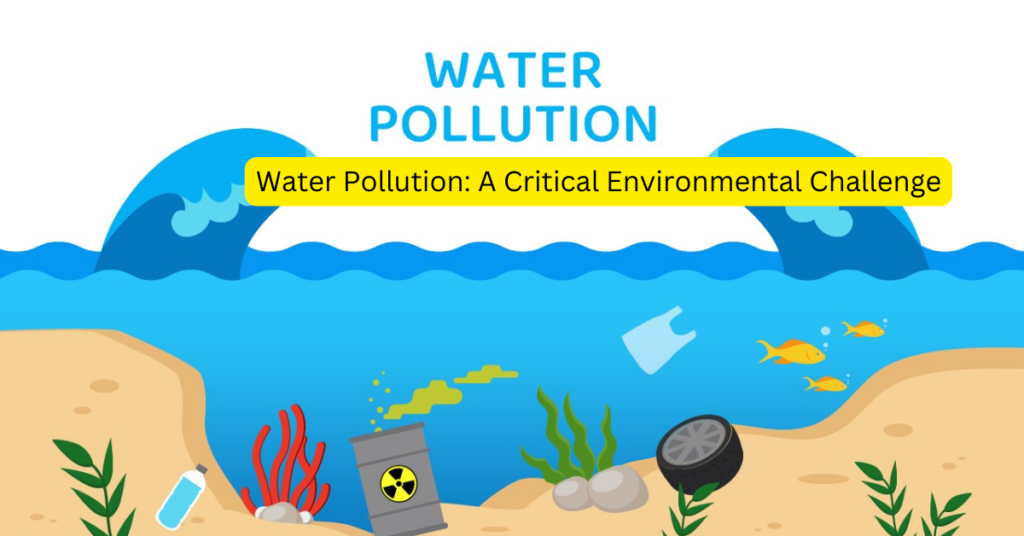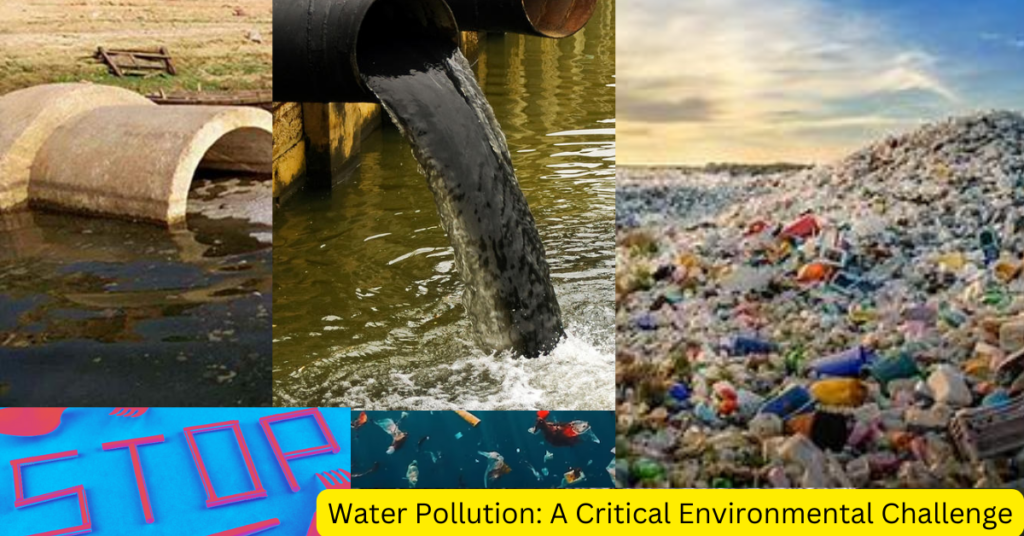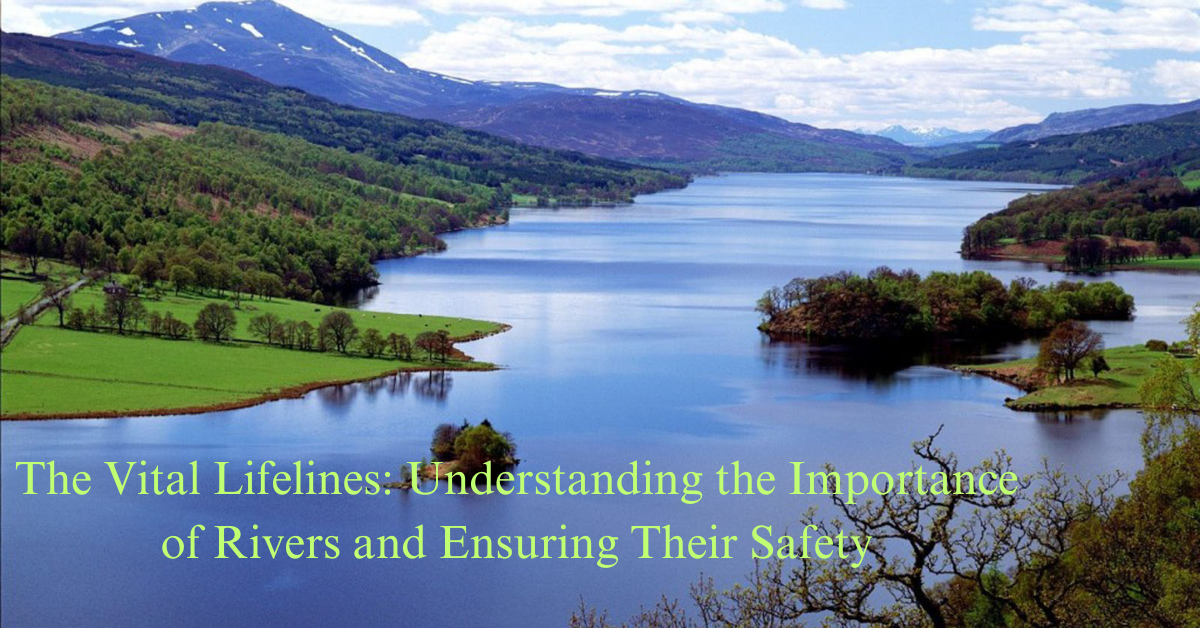Water pollution refers to the contamination of water bodies such as rivers, lakes, oceans, and groundwater by harmful substances, resulting from human activities and natural processes. These contaminants include chemicals, biological agents, physical debris, and thermal discharges that degrade water quality, posing significant risks to ecosystems, human health, and economic activities.
Major sources of water pollution include industrial discharges, agricultural runoff, urban runoff, improper waste disposal, and mining operations. The consequences of water pollution encompass ecosystem damage, health hazards, and economic losses, necessitating comprehensive regulation, sustainable practices, industrial responsibility, public awareness, and restoration initiatives to mitigate its impact.

Table of Content
Water Pollution: A Critical Environmental Challenge
Water pollution stands as a severe environmental concern impacting the health of ecosystems and the well-being of both humans and wildlife globally. The necessity of clean water for drinking, agriculture, industry, and recreation highlights the urgency of addressing this pressing issue with comprehensive strategies.
Types of Water Pollution
Water pollution arises from numerous sources and can be categorized into several types based on the origin and nature of the contaminants.
- Chemical Pollution: This occurs when harmful chemicals, including pesticides, heavy metals, and industrial chemicals, enter water bodies. Agricultural runoff is a significant source of pesticides and fertilizers, which introduce nitrates and phosphates into rivers and lakes, leading to eutrophication. Industrial discharges often contain toxic substances such as mercury, lead, and other heavy metals that can accumulate in aquatic organisms, posing serious health risks to humans and wildlife.
- Biological Pollution: This type of pollution is caused by the presence of pathogens such as bacteria, viruses, and protozoa in water. Sewage and wastewater discharge without proper treatment are primary sources of biological contaminants, leading to waterborne diseases like cholera, dysentery, and hepatitis.
- Physical Pollution: Physical pollutants include plastics, sediment, and debris that enter water bodies through improper waste disposal and erosion. Plastic pollution is particularly problematic as it not only affects marine life through ingestion and entanglement but also introduces toxic microplastics into the food chain.
- Thermal Pollution: This occurs when industries discharge heated water or effluents into water bodies, raising the temperature and affecting aquatic life. Elevated temperatures can decrease oxygen levels, leading to the death of fish and other aquatic organisms.
Causes of Water Pollution Consequences of Water Pollution
Water pollution is predominantly a result of human activities. The main causes include:
- Industrial Discharges: Factories and manufacturing plants release a variety of pollutants into water bodies. These include toxic chemicals, heavy metals, and organic waste. Many industries do not treat their effluents adequately before discharging them into rivers, lakes, or oceans.
- Agricultural Runoff: The use of fertilizers and pesticides in agriculture leads to runoff that carries these chemicals into nearby water bodies. This runoff is rich in nutrients, particularly nitrogen and phosphorus, which cause algal blooms and subsequent eutrophication, depleting oxygen in the water and harming aquatic life.
- Urban Runoff: Urban areas contribute to water pollution through stormwater runoff, which collects pollutants from roads, parking lots, and other surfaces. This runoff often contains oil, grease, heavy metals, and other contaminants.
- Improper Waste Disposal: Dumping of household waste, plastics, and other materials into water bodies is a widespread issue. Solid waste, particularly plastics, pose long-term environmental hazards as they persist in the environment for centuries.
- Mining Activities: Mining operations release large quantities of heavy metals and acidic drainage into water systems. The extraction processes often expose sulfide minerals, which oxidize and release sulfuric acid, contaminating nearby water bodies.
Water pollution has far-reaching consequences, including:
- Ecosystem Damage: Loss of biodiversity, algal blooms, and dead zones impair aquatic ecosystems.
- Human Health Risks: Waterborne diseases and exposure to heavy metals pose significant health risks to humans.
- Economic Costs: Cleanup efforts, declines in fisheries, and impacts on tourism impose substantial economic burdens.
Solutions and Mitigation Strategies :

Regulation and Enforcement: Governments must implement and enforce strict regulations on the discharge of pollutants. This includes setting limits on industrial effluents, improving wastewater treatment standards, and controlling agricultural runoff.
Sustainable Agriculture: Farmers can adopt practices such as precision farming, integrated pest management, and organic farming to reduce the use of chemical fertilizers and pesticides. Buffer strips and constructed wetlands can also help filter runoff before it reaches water bodies.
Industrial Responsibility: Industries should invest in cleaner technologies and waste treatment processes to minimize their environmental impact. Adopting a zero-discharge policy and recycling water within industrial processes can significantly reduce water pollution.
Public Awareness and Education: Raising awareness about the sources and effects of water pollution is crucial. Educating communities about proper waste disposal, reducing plastic use, and conserving water can lead to more environmentally friendly behaviors.
Restoration Projects: Initiatives to restore polluted water bodies, such as wetland restoration, reforestation, and the creation of green infrastructure, can help improve water quality. These projects enhance the natural filtration capacity of ecosystems and provide habitats for wildlife.
Conclusion
Water pollution is a complex issue demanding collaborative efforts to protect and preserve water resources for future generations. Through regulation, sustainable practices, public awareness, and restoration initiatives, we can mitigate its impact and ensure the availability of clean water for all.






